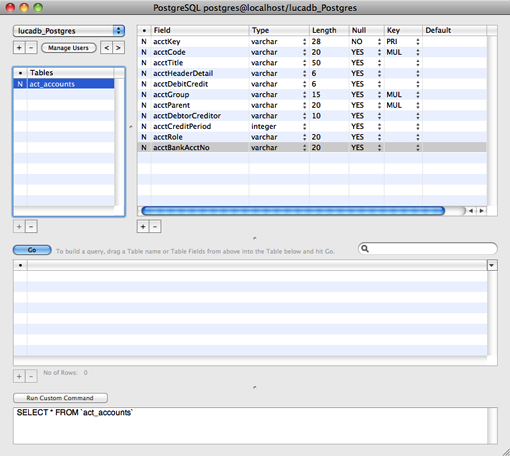
If you check whether the load data is valid when converting it into the binary file, you can skip the check when loading it from the binary file to a table. In version 3.1, pg_bulkload can convert the load data into the binary file which can be used as an input file of pg_bulkload.
#Postgres copy how to
But what if it is to be installed on a large number of servers? ) Such as in a clustered environment? Here's how to achieve it using a shell script. That approach is good when number of servers is less.
#Postgres copy install
This post taught you how to install PostgreSQL Database on Linux using source code. To do this, you specify the column names together with table name after COPY keyword. In some cases, you want to export data from just some columns of a table to a CSV file. PostgreSQL exports all data from all columns of the persons table to the persons_db.csv file. It's also very easy to import to another table/database using COPY FROM. This has the advantage that it's dumped in an easy-to-parse format of your choice - rather than psql's tabulated format. An alternative approach is using the COPY TO command to write directly to a file on the server. The psql \o command was already described by jhwist. Unlike a regular SELECT statement, the SELECT INTO statement does not return a result to the client. The new table will have columns with the names the same as columns of the result set of the query. The PostgreSQL SELECT INTO statement creates a new table and inserts data returned from a query into the table. The PostgreSQL usage of SELECT INTO to represent table creation is historical. This indeed is the usage found in ECPG (see Chapter 33) and PL/pgSQL (see Chapter 39). The SQL standard uses SELECT INTO to represent selecting values into scalar variables of a host program, rather than creating a new table. To copy data out first connect to your PostgreSQL via command line or another tool like PGAdmin. PostgreSQL has some nice commands to help you export data to a Comma Separated Values (CSV) format, which can then be opened in Excel or your favorite text editor. Export data from a table to CSV file using the \copy command In case you have the access to a remote PostgreSQL database server, but you don’t have sufficient privileges to write to a file on it, you can use the PostgreSQL built-in command \copy. The CSV file also needs to be writable by the user that PostgreSQL server runs as. But we require to give the correct delimiter in the file.

We can change the delimiter from comma to pipe or any other symbol. Psql -U postgres -p 5432 -d test -c "select * from test" PASS QUERY FILE IN COMMAND IN POSTGRESQL psql -U -p -d -f “” Step 1: Create text file a.txt and write query which you want to execute.Ĭopy Customer cust_id,cust_name from “c:\Program Files\PostgreSQL\10\Data\Data_Copy\Customer_file2.txt” Delimiter ‘,’ CSV The above command will insert the data from text file to Customer table. SELECT * FROM table \g filename to just output to the file 'filename', or: select * from lineshoot \g |cat > /solsolute/path/filename to append to the file. It's also using separate threads for reading and copying data, so it's quite fast (interestingly enough, it got written from Python to Common Lisp and got a 20 to 30x speed gain, see blog post). There's Pgloader that uses the aforementioned COPY command and which can load data from csv (and MySQL, SQLite and dBase). Note that for reading structured data files into tables, the COPY command and the file_fdw foreign data wrapper will provide more convenient and efficient interfaces. pg_read_file() can be used to return the contents of any text file on the local filesystem to which the postgres system user has access. However, if we want to copy the contents of the view, we must feed the COPY command with the sql query.Usage. COPY TO can only be used with tables, not views.It is necessary to grant SELECT privilege on the table read by COPY TO, and the INSERT privilege in the table where the values are inserted with COPY FROM.Table columns not specified in the COPY FROM column list get their default values.

When using the COPY FROM command, each field in the file is inserted sequentially to the specified column.COPY FROM copies the data from the file to the table.Therefore, the file must be accessible to the PostgreSQL user. The COPY command instructs the PostgreSQL server to read from or write to the file directly.That is, if the column list is specified, COPY TO only copies the data in the specified columns to the file. COPY TO can also copy the results of the SELECT query.COPY TO copies the contents of the table to the file.The COPY command moves data between PostgreSQL tables and standard file system files.This article contains information about PostgreSQL copy command example such as exporting query result to csv, importing file to postgres.


 0 kommentar(er)
0 kommentar(er)
